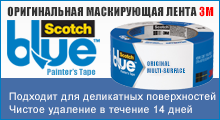| АВТОСТЕКЛА: продажа автостекол, доставка и установка автостекол в Москве |
в мире автостекол
| Email для связи: |
НОВЫЕ ПОСТУПЛЕНИЯ Сканер (адаптер) диагностический ELM 327 OBD Автодоктор 840 руб.
СПЕЦ. ПРЕДЛОЖЕНИЕ Универсальный молдинг U-образного типа для Mazda3 03-09, Mazda6 02-08 (лобовое) 
252 руб.
А ЗНАЕТЕ ЛИ ВЫ, ЧТО... Немецкая фирма "ProGlass" специально создана для Европы и является альтернативой американской компании "Equalizer". Немецкое качество этих товаров очевидно.
|
Volkswagen Tiguan 20102010 Volkswagen Tiguan. Windshield, quarter glass and back glass removal and replacement instructions
Vehicle type: Four-door utility vehicle NAGS® numbers*: Windshield part numbers FW2944 pre-applied adhesive system, lower retainer, and FW2945 PAAS, lower retainer, rain sensor bracket; quarter glass FQ23866-69 with black or chrome option;
and back glass FB23870 antenna, heated, bonded, solar; FB23871 heated, bonded, solar, privacy; and FB23872 wiper, antenna, heated, bonded, solar, privacy
A. Windshield
Preparation
1. Cover the front seats, floorboards, dash and steering wheel with a clean drop cloth or disposable plastic covers. Note: Always wear eye and hand protection when working with glass. Make sure you have the right glass and moldings and that the urethane systems you are about to use are current. Windshield part numbers are FW2944 and FW2945. 2. Drape the fender with a fender cover and tape up any vulnerable areas on the vehicle to protect against possible damage. Tape up the defroster vents to prevent debris from falling into the openings. 3. Remove the rearview mirror by grasping the base and turning it one-quarter turn in a clockwise direction. 4. If the vehicle is equipped with rain sensor, remove the decorative cover and disconnect the sensor from the bracket by releasing the metal strap from the two sides. Use a new sensor or gel pack to properly re-attach the sensor to the glass. 5. Remove the windshield- wiper nut covers. 6. Remove the windshield-wiper nuts using a 13-millimeter wrench or socket. 7. The top molding is an underside PAAS. 8. Pry up the side moldings using a door-pad tool, or plastic paddle or wedge. If you start near the bottom corner, you might be able to use your fingers to gently pull the moldings up. 9. Pull the weatherstrip from the leading edge of the cowl panel and firewall. Remove the three sandwich-type clips along the leading edge of the two-piece cowl panel. Then, start in the corner and release the top edge of the cowl panel from the lower glass retainer using a plastic stick. Run the stick along the bottom edge of the glass retainer.
Removal 11. Make sure cutting blades are sufficiently sharp. 12. Before cutting out the windshield, remove contaminants from the glass and pinchweld to prevent contact with the urethane. 13. Apply protective tape to the top edge of the roof flange to protect against damage. 14. Use the cutting tools of your choice to remove the glass from the adhesive bead. If you use a power tool, lubricate the cutting area with water. Spray the top and sides; then make your cuts. The lower urethane bead must be cut from the vehicle interior. Take care to protect the dashboard against potential damage. 15. Take the windshield out of the opening using vacuum cups. Make sure the vacuum cups do not overlap a crack in the glass. Lift the glass and place it on a windshield stand or suitable workstation. Installation 16. After cutting the windshield out, remove contaminants such as dirt, moisture and debris from the pinchweld. Clean the dashboard. 17. Dry fit the new glass to the opening. Mark your glass using a grease pencil or retention molding tape. 18. Place your vacuum cups on the new windshield in the appropriate location. 19. Set the windshield onto the old urethane. 20. With the windshield resting in the opening, make sure it is in the right spot. 21. Adjust both sides to the correct setting, marking the passenger side, then the driver side. Lift the glass and place it on a windshield stand or suitable workstation. 22. Follow the urethane manufacturer's recommendations for installation. 23. Clean the inside of the windshield using a urethane manufacturer-recommended product. Do not touch the bonding area of the windshield after cleaning, prepping or priming it. 24. Wear powder-free Nitrile gloves to protect against harsh chemicals. 25. Apply the glass prep and primer following the urethane manufacturer's recommendations. 26. Using the tool of your choice, remove the original urethane bead, leaving 1-2 mm of urethane on the pinchweld. Make sure there are no contaminants and do not touch the pinchweld after you have prepped the area. 27. Apply the pinchweld primer only to the areas where needed, and follow the urethane manufacturer's recommendations. Allow preps and primers to dry as recommended by the urethane manufacturer. 28. Apply a triangular bead of urethane to the same path as the freshly cut urethane on the pinchweld. Before cutting your V-notch, cut the tip off of your nozzle with a nozzle-cutter at the taper to replicate the width of the OE bead. With the cut nozzle, measure to the top of the roofline, and at 1/16-inch higher than the roofline, make a mark on the nozzle with a pen or marker. Notch the nozzle up to the marked line; this will give you the appropriate triangular bead. 29. Lift the windshield from the windshield stand or workstation using vacuum cups. Set the windshield on the urethane at the mark you made during your dry fit. Lower the driver's side of the windshield onto the urethane and line it up with the dry-fit mark; it is now in place. 30. The windshield is now ready to be decked. Press firmly to ensure a good seal. 31. Before re-installing the parts, check for leaks. Use a leak detector to go over the perimeter of the windshield. If you find a leak, apply more pressure or add more urethane to the spot and ensure that the glass makes contact with the wet urethane. 32. Re-install the removed parts in reverse order. 33. Allow the urethane to cure according to the urethane manufacturer's recommended cure time before returning the vehicle to the customer. Warning: Disregarding the safe drive-away time that your urethane manufacturer recommends could jeopardize the structural integrity of the vehicle and the safety of its passengers. 34. You have completed the removal and replacement of the windshield. B. Quarter glass
Removal
1. Make sure you have the right glass. Quarter glass part numbers are FQ23866-69. 2. Remove the interior trim. 3. The upper rear and roof trim is held in place with tension clips. Pull downward to release. 4. The lower quarter panel is held by two 25T Torx screws. 5. Pull out the lower from the upper quarter-panel trim in two parts (rear then front). 6. Pull out the "SRS" clip on the upper quarter-panel trim piece. Behind that is an opening to release the upper clip for the quarter panel. Use a small pocket slot screwdriver to release. Insert the screwdriver at an upward angle and find the top of the metal clip. Depress down to release the teeth on the clip. Once the clip is free, you can pull the remaining panel from around the glass perimeter. 7. Cut out the quarter glass using the tools of your choice. If you use a power tool, lubricate the cutting area with water. Spray the top and sides; then make your cuts. Installation 8. After cutting the quarter glass out, remove contaminants such as dirt, moisture and other debris from the pinchweld. 9. Dry fit the new glass to the opening. Mark your glass using a grease pencil or retention molding tape. 10. Place your vacuum cups on the new quarter glass in the appropriate location. 11. Set the glass onto the old urethane. 12. With the glass resting in the opening, make sure it is in the right spot. 13. Adjust both sides to the correct setting. Lift the glass and place it on a windshield stand or suitable workstation. 14. Follow the urethane manufacturer's recommendations for installation. 15. Clean the inside of the quarter glass using a urethane manufacturer-recommended product. Do not touch the bonding area of the glass after cleaning, prepping or priming it. 16. Wear powder-free Nitrile gloves to protect against harsh chemicals. 17. Apply the glass prep and primer following the urethane manufacturer's recommendations. 18. Using the tool of your choice, remove as much of the original urethane bead as the urethane manufacturer recommends. Make sure there are no contaminants and do not touch the pinchweld after you have prepped the area. 19. Apply the pinchweld primer only to the areas where needed, and follow the urethane manufacturer's recommendations. Allow preps and primers to dry as recommended by the urethane manufacturer. 20. Apply a triangular bead of urethane to the same path as the freshly cut urethane on the pinchweld. Before cutting your V-notch, cut the tip off of your nozzle with a nozzle-cutter. With the cut nozzle, measure to the top of the roofline, and at 1/16-inch higher than the roofline, make a mark on the nozzle with a pen or marker. Notch the nozzle up to the marked line; this will give you the appropriate triangular bead. 21. Lift the quarter glass from the windshield stand or workstation using vacuum cups. Set the glass on the urethane at the mark you made during your dry fit. Line it up with the dry-fit marks; it is now in place. 22. The quarter glass is now ready to be decked. Press firmly to ensure a good seal. 23. Before re-installing the parts, check for leaks. Use a leak detector to go over the perimeter of the glass. If you find a leak, apply more pressure or add more urethane to the spot and ensure that the glass makes contact with the wet urethane. 24. Re-install the removed parts in reverse order. 25. Allow the urethane to cure according to the urethane manufacturer's recommended cure time before returning the vehicle to the customer. 26. You have completed the removal and replacement of the quarter glass. C. Back glass 1. Make sure you have the right glass. Part numbers are FB23870, FB23871 and FB23872. 2. Open the back hatch and remove the interior moldings around the top and sides of the glass. It is only necessary to remove the trim that covers the defroster and antenna connectors. 3. Lift the wiper nut cover and remove the 13-mm nut using a deep-well socket and ratchet. Remove the wiper arm and put it in a safe place. 4. You do not need to remove the spoiler for glass removal. 5. The sides and top are exposed, but the glass touches the door frame in some places. Removal will be difficult if your goal is to salvage the part. 6. Cut out the back glass using the tools of your choice. If you use a power tool, lubricate the cutting area with water. Spray the top and sides; then make your cuts. Installation 7. After cutting the back glass out, remove contaminants such as dirt, moisture and other debris from the pinchweld. 8. Dry fit the new glass to the opening. Mark your glass using a grease pencil or retention molding tape. 9. Place your vacuum cups on the new back glass in the appropriate location. 10. Set the glass onto the old urethane. 11. With the glass resting in the opening, make sure it is in the right spot. 12. Adjust both sides to the correct setting. Lift the glass and place it on a windshield stand or suitable workstation. 13. Follow the urethane manufacturer's recommendations for installation. 14. Clean the inside of the glass using a urethane manufacturer-recommended product. Do not touch the bonding area of the back glass after cleaning, prepping or priming it. 15. Wear powder-free Nitrile gloves to protect against harsh chemicals. 16. Apply the glass prep and primer following the urethane manufacturer's recommendations. 17. Using the tool of your choice, remove as much of the original urethane bead as the urethane manufacturer recommends. Make sure there are no contaminants and do not touch the pinchweld after you have prepped the area. 18. Apply the pinchweld primer only to the areas where needed, and follow the urethane manufacturer's recommendations. Allow preps and primers to dry as recommended by the urethane manufacturer. 19. Apply a triangular bead of urethane to the same path as the freshly cut urethane on the pinchweld. Before cutting your V-notch, cut the tip off of your nozzle with a nozzle-cutter. With the cut nozzle, measure to the top of the roofline, and at 1/16-inch higher than the roofline, make a mark on the nozzle with a pen or marker. Notch the nozzle up to the marked line; this will give you the appropriate triangular bead. 20. Lift the back glass from the windshield stand or workstation using vacuum cups. Set the glass on the urethane at the mark you made during your dry fit. Line it up with the dry-fit marks; it is now in place. 21. The back glass is now ready to be decked. Press firmly to ensure a good seal. 22. Before re-installing the parts, check for leaks. Use a leak detector to go over the perimeter of the glass. If you find a leak, apply more pressure or add more urethane to the spot and ensure that the glass makes contact with the wet urethane. 23. Re-install the removed parts in reverse order. 24. Check the operation of the defroster, wiper, washer and antenna systems. 25. Allow the urethane to cure according to the urethane manufacturer's recommended cure time before returning the vehicle to the customer. 26. You have completed the removal and replacement of the back glass. By Bob Beranek |






